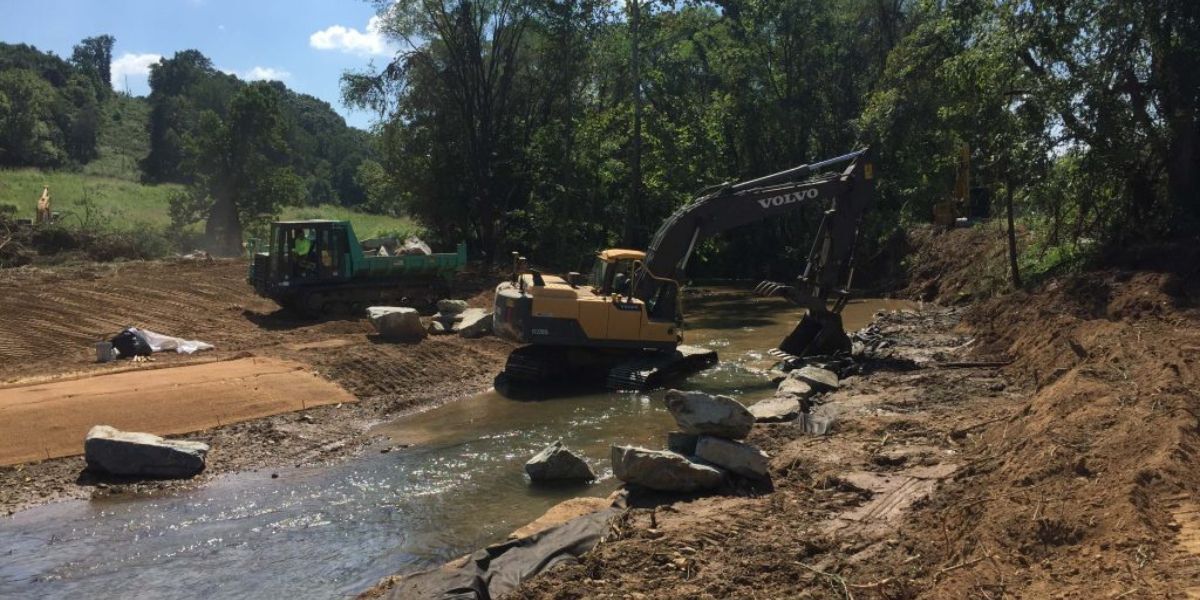
Waterways are vital to our ecosystems. They shape landscapes, support wildlife, and provide clean water. When natural streams are changed or damaged, they cause significant environmental problems. Stream restoration services help restore the balance between ecological science and practical environmental repair.
What Is Stream Restoration?
Stream restoration is the process of returning a degraded or modified stream to a more natural state. The goal is to enhance ecological integrity, improve water quality, and restore natural hydrology.
Common causes of stream degradation include:
- Urban development and construction
- Agricultural runoff
- Erosion and sedimentation
- Channel straightening or damming
Stream restoration services combine hydrology, ecology, engineering, and geomorphology to tackle these issues head-on.
Why Are Stream Restoration Services Important?
Healthy streams do more than carry water:
- Filter pollutants before they reach larger water bodies
- Provide habitats for fish, amphibians, and plant life
- Recharge groundwater supplies
- Help manage flood risk
- Increase biodiversity and ecological resilience
According to the U.S. Environmental Protection Agency (EPA), over 50% of streams and rivers in the United States are considered impaired. Stream restoration services offer a proactive solution.
Core Techniques Used in Stream Restoration
Restoring a stream isn’t as simple as planting a few trees or removing trash. It’s a multi-disciplinary approach involving tailored techniques depending on the stream’s condition and surroundings.
1. Re-meandering of Straightened Channels
Many streams were historically straightened for agriculture or urban development, which disrupts natural flow. Reintroducing meanders helps:
- Reduce water velocity
- Promote sediment deposition
- Support diverse aquatic habitats
2. Bank Stabilization
Unstable stream banks can erode, dumping sediments into the water. Techniques include:
- Riprap (rock placement)
- Live staking with native vegetation
- Coir logs (biodegradable fiber rolls)
These strategies hold soil in place while enhancing the natural appearance.
3. In-Stream Habitat Enhancement
Installing structures like woody debris, boulders, or riffle-pool sequences helps:
- Create habitats for fish and macroinvertebrates
- Improve oxygen levels in the water
- Mimic natural variability in flow and depth
4. Floodplain Reconnection
Restoring a stream’s connection to its floodplain:
- Increases water storage during storms
- Reduces flood damage downstream
- Supports wetland vegetation and wildlife
5. Riparian Buffer Restoration
Vegetated areas along stream banks serve as a buffer between the water and adjacent land uses. Planting native trees, grasses, and shrubs helps:
- Filter pollutants
- Provide shade to regulate water temperature
- Prevent erosion
The Science That Drives Stream Restoration
Stream restoration services aren’t guesswork, they’re grounded in rigorous science and data. Here’s a glimpse of what informs the work:
1. Hydrology & Geomorphology
Professionals analyze the stream’s:
- Flow rates and seasonal variations
- Sediment transport and erosion patterns
- Channel shape and slope
This data ensures that restoration mimics natural processes, rather than imposing artificial fixes.
2. Biology & Ecology
Stream ecosystems are delicately balanced. Restoration experts consider:
- Aquatic species population and migration needs
- Riparian plant communities
- Invasive species control
Biodiversity assessments help shape a restoration plan that supports native life.
3. Water Quality Monitoring
Regular sampling of water helps track:
- pH, dissolved oxygen, and nutrient levels
- Presence of contaminants (e.g., nitrates, phosphates)
- Turbidity and sediment load
This scientific approach validates the effectiveness of restoration over time.
Key Benefits of Stream Restoration Services
Implementing stream restoration services results in far-reaching ecological and social benefits, including:
Environmental Benefits
- Enhanced biodiversity
- Improved water quality
- Reduced erosion and sedimentation
- Increased carbon sequestration
Community Benefits
- Flood mitigation
- Recreational spaces and trails
- Educational and outreach opportunities
- Boost in property values
Economic Benefits
- Lower long-term maintenance costs
- Job creation in environmental consulting and landscaping
- Support for eco-tourism and recreation-based businesses
Challenges & Considerations
While stream restoration offers immense value, it’s not without challenges:
- Permitting and regulatory compliance can be complex
- Funding and budgeting require long-term commitment
- Ongoing maintenance is crucial to preserve results
- Stakeholder coordination is often needed across the public and private sectors
A qualified stream restoration service provider can help navigate these challenges with strategic planning and science-based solutions.
How to Get Started with Stream Restoration
When contemplating stream restoration, whether you are a municipality, business, or landowner, it is essential to begin with a structured approach:
- Consulting with a certified environmental or civil engineer
- Requesting a stream assessment to determine current conditions
- Developing a restoration plan tailored to your goals and landscape
- Applying for grants or incentives available through state and federal programs
- Engaging your community in restoration and stewardship efforts
Final Words
Stream restoration is more than an environmental service; it’s a vital investment in the health of our ecosystems and communities. By applying scientific principles to restore natural stream functions, we can improve water quality, protect wildlife, and reduce the risks of flooding and erosion. While the process requires careful planning, expertise, and long-term commitment, the ecological, economic, and social rewards are well worth the effort. Whether you’re a property owner, developer, or public official, taking action today can help ensure that our waterways remain vibrant, resilient, and beneficial for generations to come.

